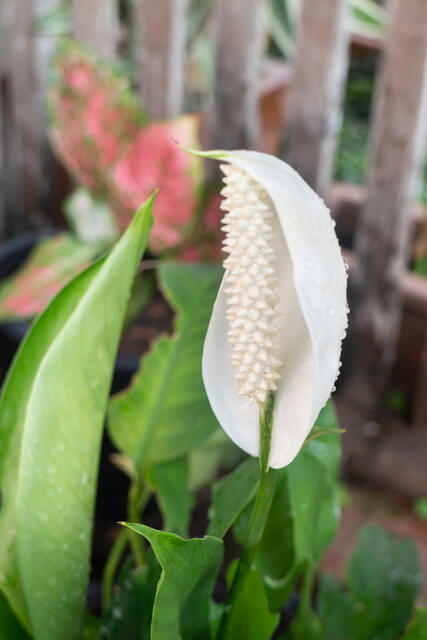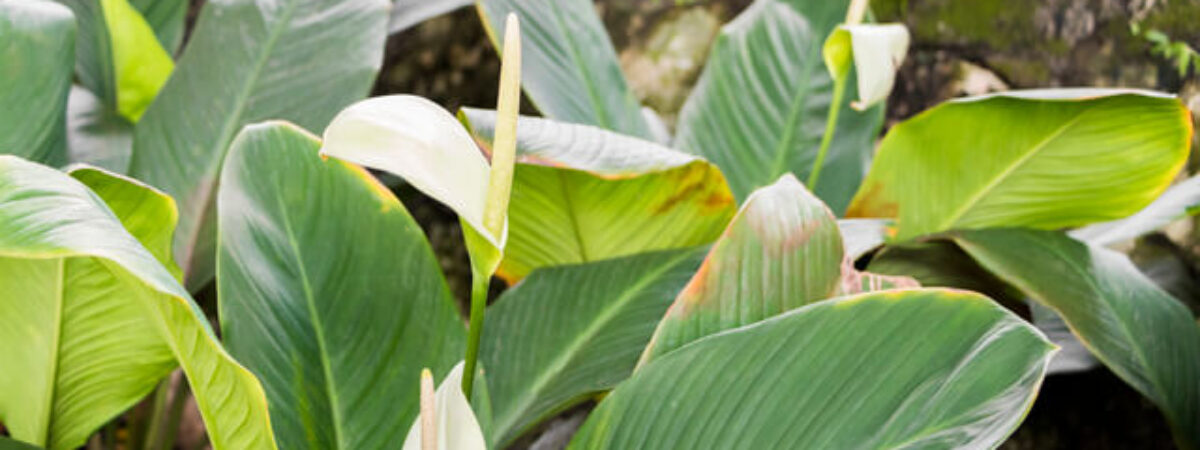Peace lily is a tropical perennial plant that is an excellent indoor plant. Peace lilies are basically hybrid from the genus Spathiphyllum and family is Araceae. They originated from Central America and Asia.
They have an amazing property of purifying and cleaning the air as they neutralize toxic gases like Carbon monoxide and methane. These are also believed to bring peace and prosperity to your home.
Because of its popularity in offices and homes, these Peace Lilies are also known as Closet plants. They have beautiful white flowers and bright green leaves. Click To TweetBecause of its popularity in offices and homes, these Peace Lilies are also known as Closet plants. They have beautiful white flowers and bright green leaves.
As these are perennial plants, you can enjoy the essence and benefits of these plants year after year if taken proper care. These plants are however toxic to Humans and Pets as they contain calcium oxalate that causes respiratory irritation.
Varieties
Though the varieties are not available easily, still if you want to have some other varieties of Peace Lily, then here is a list you can choose from. You can order these varieties online.
Spathiphyllum wallisii
One of the smallest Peace lily that grows upto a height of 12 inches only
Spathiphyllum ‘Power Petite’
This variety is even smaller than the wallisii that grows upto 8-10 inches height only
Spathiphyllum ‘Sensation’
This variety grows up to 4–6 feet tall and wide, making it the largest one available.
Spathiphyllum ‘Domino’,
Easily distinguished by its vividly variegated leaves, this medium-sized variety is fairly easy to grow.
Spathiphyllum ‘Mojo Lime’,
The Peace Lily with lime-green leaves is another medium-sized peace lily.
Spathiphyllum ‘Mauna Loa Supreme’:
There are several common varieties of this plant which grow between three to four feet high and have leaves that can grow up to nine inches wide.
Spathiphyllum ‘Golden Delicious’:
A variety that features new growth with stunning golden-green color.
Spathiphyllum ‘Starlight’:
A wavy-margined variety with narrow leaves. A single plant can produce up to 20 flowers.
Growing Guide

Acquiring knowledge about the basic requirements of plants you are growing is an important task of every gardener.
So, here I have explained in detail about the Soil, light, Climatic conditions, Fertilizer required by the Peace Lily plant to grow healthy.
Container/Pot size
Peace Lily is a pot based plant so proper container size is important for the plant to grow. Initially a 6-8 inches of pot size is enough when the plant is small in size.
When they gradually grow and mature, shift them to an 8 to 10 inch container. If the plant grows outside of the pot then you need to shift the plant into a larger pot.
Soil
A good potting mix soil that consists of peat and perlite or composting materials works great for Peace lily to grow healthy.
Since Peace Lily belongs to a tropical area, composting plant materials are best for these plants. Peace lily prefers well drained soil that can drain out excess water. So a clay vessel proves to be a great medium.
Light
Peace Lily prefers indirect sunlight, though they are shade lovers. They can be grown in low light conditions and even under fluorescent lights so your office desk is also a great place to grow them.
If you see that the leaves are turning yellow or pale then this is the sign that your plant is exposed to too much light and if the plant is scorching or turning brown then it occurs due to too direct Sunlight for a long duration.
Whereas if the plant is kept in low light conditions then it will hamper their blooming capacity and the plant becomes leggy.
So, medium exposure to light is best for the growth of Peace Lily plants.
Temperature
Being an indoor plant, Peace Lily grows well in indoor temperatures. Ideally, the optimum temperature for Peace Lily is 65 to 80 degrees Fahrenheit.
Peace Lily plants cannot tolerate cold temperatures and if exposed then the plants may die. They prefer moist and warm conditions. Click To TweetPeace Lily plants cannot tolerate cold temperatures and if exposed then the plants may die. They prefer moist and warm conditions.
Water
Unlike other plants these Peace Lily plants prefer less water than being overwatered. Watering the plants when the soil dries out during summer works best for them. In winter occasional watering is required.
Misting the plant works great for their growth to retain their moisture. Keep the soil moist during summer.
Fertilizer
Though Peace Lily plants don’t require much fertilization, still to get more blooms you need to feed your plants with some nutrients.
During summer and spring slow release fertilizer once in every month works great to get sufficient blooms. During winters do not fertilize the plants frequently.
If the plant produces green blooms then it is the sign of overfertilization so be careful on the quantities while applying the fertilizer as these plants are not heavy feeders.
It is always best to choose an organic fertilizer over the chemical ones and moreover, Peace Lily plants are quite sensitive to chemical fertilizers.
Propagation
When you see your mother plants giving rise to some offshoot crowns then this is the sign to propagate the plant. So, let’s learn how the propagation of Peace Lily is being carried out.
First take the mother plant from the container and then cut the adjacent crowns from the plant. Choose the part that has at least two or more leaves and roots attached that can grow well.
Then take a container that has well drained potting soil with a little bit of moisture. Place the cut parts in the container and water them thoroughly.
Place the pot in a warm and light condition and within a month you will see the roots emerging.
Problems in Peace Lily plants
Though these plants are not prone to pests or diseases, still there are some problems associated with the plant that can be taken care of easily.
Mealybugs and Scale
If you see any Mealybugs and scale attacking to your Peace Lily plants then spay some insecticidal solution. Regular wiping the Peace Lily plant helps the insects to keep at bay.
Yellow leaves
Yellow leaves are associated with multiple reasons. Either overwatering or underwatering may cause the leaves to turn yellow. Even aging of the plant can cause yellow leaves.
Brown Leaves
Brown leaves can also occur due to multiple reasons such as lack of humidity, over fertilization, too much exposure to light. So taking proper care is the key to getting healthy blooms.
Conclusion
Soothing ambience, your favorite book or your favorite music with a cup of coffee/tea , sounds great right?. If you are someone who loves to have such an environment at your home or at your workplace then Peace Lily should be your absolute favorite.
These are moderate growers and require a bit more care than other houseplants, but I think it is absolutely fine as the result is so divine when they bloom.
As you have read this article so far, you must have got a clear idea on how to take care of these plants effectively.
I think you should definitely plant Peace Lily at your home that would reward you with a calm environment.






